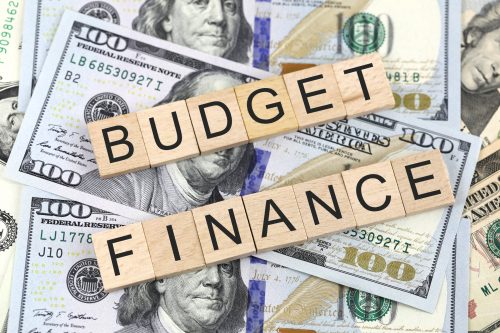


This work is licensed under a Creative Commons Attribution-ShareAlike 3.0 Unported License.
By Zainab Antepli
CHICAGO, ILL – Tim Curry, policy & research director at the Fines and Fees Justice Center, posted an article through the American Bar Association here this week, arguing the current U.S criminal justice system consistently persecutes people in poverty.
Curry cites the example of a woman, Roxana Beck, who had pleaded guilty to a misdemeanor, “frequenting a place where controlled substances were used, sold, or manufactured.”
The Idaho court “imposed a bill of $683.50 in fines and fees.” Beck had been appointed a lawyer because she could not “afford to hire one,” who “asked that the costs be waived or reduced, given Beck’s tough financial circumstances.”
The judge denied the request, said Curry.
Curry added, “Beck failed to make payments, the court issued a warrant for her arrest.” Subsequently, she “spent seven days in jail waiting to see the judge” before being charged with “a new crime of ‘contempt’ for not paying.”
Curry noted that “the judge sentenced Beck to time served in jail, again ordered her to pay costs, and reminded her that if she didn’t, she would continue to face new arrests, detentions, and contempt convictions.”
Curry asked how someone could earn that money sitting in jail.
Curry applies Beck’s case to a national epidemic, explaining how people are “regularly incarcerated because they owe court debt stemming from a conviction, a traffic ticket, or some municipal infraction that they simply cannot afford to pay.”
Curry uses another example in Kentucky where “local news reports showed that in a single week in November 2022, six people were processed into the county jail for ‘non-payment of court costs, fees, or fines,’” which is “equivalent to nearly one every day, which is particularly shocking considering this is a rural county of just over 100,000 people.”
In showing how widespread this issue of criminalized poverty is, Curry also notes how, in Mississippi, “courts sentence hundreds of people each year to what they euphemistically call ‘restitution centers, ’” which he explains are, in reality, “modern-day debtors’ prisons.” Curry said people are “kept behind razor-wire fences, subjected to strip searches, may only leave to go to work, and even then are transported by corrections officials,” adding the length of someone’s sentence can also vary between a few months to years.
Curry writes in the ABA publication it is “not surprising when someone is working a minimum wage job to pay off thousands of dollars in court debt while the state’s Department of Corrections continues to add new fees to their bill, including a $10 daily room and board charge.”
But criminalized poverty is systemic, which includes other facets, such as race, Curry adds, arguing this punitive system of debt collection as “unfairly coercive and counterproductive response to the inability to pay.”
Curry argues that these systems have very “serious racial disparities” and how an investigation led by the U.S Department of Justice in Ferguson, Missouri “found the local court used arrest warrants almost exclusively ‘to compel payment through the threat of incarceration’ and that 96 percent of those jailed on warrants were Black.”
He cites another example in Nevada where a study “found that while Black people made up approximately 13 percent of the population of Las Vegas, nearly 45 percent of all arrest warrants issued for failure to pay a traffic ticket were issued against Black people.”
Curry also outlines the historical as well as political roots of this problem, first stating, “Congress abolished debtors’ prisons in 1833.” However, he goes on to recount that “state judges continued to send people to jail for failing to pay court debts.”
Curry noted two cases in the 1970s in the U.S. Supreme Court “in which the Court found it unconstitutional to incarcerate people solely because they could not pay a public debt (Williams v. Illinois, 399 U.S. 235 (1970); Tate v. Short, 401 U.S. 395 (1971)).”
Ten years after these cases, Curry added, “the Court prohibited probation revocation for nonpayment without finding that the person had the means to pay and refused to do so (Bearden v. Georgia, 461 U.S. 660 (1983)).”
Curry flushes out these legal terms by saying these decisions find that “a court must first determine that the failure was willful” and said the “Bearden Court acknowledged the state has multiple options at its disposal to punish and to deter criminal behavior short of incarcerating someone who cannot pay a fine or fee and held that the Constitution requires the courts to exhaust those options.”
But Curry quickly adds that “people are still going to jail for being too poor to pay court debt.”
The arguments for justifying these processes, as Curry describes it, has been made by courts “claiming the incarceration is for ‘contempt’ or for not complying with a court order, rather than for nonpayment.
Curry added that “many courts also make paying a requirement of probation or community supervision so that revocation can be justified as failing to comply with a condition of supervision, not a financial lapse.”
Curry explains that the “‘contempt of court’ justification, however common it may be in practice, is still unlawful bootstrapping.” He again cites the Bearden Court and how it “expressly rejected this approach, saying that contempt without a willfulness finding ‘is no more than imprisoning a person solely because he lacks funds to pay the fine, a practice we condemned’ (Bearden, 461 U.S. at 674).”
Curry also writes the “ability to pay is the crux of the legal issue,” which is why the “courts are theoretically supposed to look at an individual’s financial circumstances and assess the level of hardship making payments would cause.”
However, Curry points out that there “is no set formula for doing this. In practice, many courts simply assume an ability to pay without any further analysis.”
The reality is that many people are in financial hardships in the U.S., said Curry, noting the Federal Reserve shares that “nearly one in four adults is either unable to stay current on their bills or is one unexpected $400 expense away.”
Curry also adds that another “study by the lending industry found that over 60 percent of Americans are living paycheck to paycheck. Yet, all too often, there is a real disconnect between those making sentencing decisions and the financial realities in this country.”
These lessons that Curry examines in the article are lessons to be learned, as he puts it, on “how we as a community can start to live up to the constitutional prohibitions regarding incarceration for nonpayment.”
Curry returns to the first example of Beck to show the determination of “her court-appointed attorney” because they “took the case to the Idaho Supreme Court, claiming the lower court’s unlawful practices left her in perpetual threat of arrest and imprisonment for being poor.”
The more astonishing notion, informs Curry, was that “the Idaho Supreme Court agreed. In a sweeping ruling, it held that the practice of issuing warrants for nonpayment (or “contempt” predicated on nonpayment) violated the Fourth Amendment prohibition against unlawful seizure. Beck v. Elmore County, 489 P.3d 820 (Idaho 2021).
“Failure to pay (or failure to follow a court order) is not enough to justify arrest and detention, even for a short period of time; under Bearden, there has to be independent probable cause that the person has the ability to pay and is simply choosing not to.”
Moreover, Curry opines litigation “doesn’t undo the harm when people have already been incarcerated for court debts” which is “why legislative and policy changes are vital.”
He said, from a policy perspective, “it is critical to understand the difference between fines and fees because the ways of addressing their impact can differ. A fine is a financial punishment for an offense. It is a penalty sometimes imposed as an alternative to jail time, but not always.”
Curry added, there are some “penological justification for fines, so reform efforts should focus on ensuring they are imposed justly, proportionally, and in a way that does not financially cripple the individual.”
Curry says fees “are costs imposed by courts and legislatures to raise revenue. They are used to paying for everything from keeping the courthouse running to paying sheriff’s pensions to funding research on autism.”
He adds that because of their nature, these “revenue-generating fees are a substitute for taxes; they fund government operations but are only imposed on those in the criminal, traffic, and municipal court systems.”
Curry asserts that “fees are a wholly unreliable way to fund government” due to their systemic characteristic of being “being a regressive form of taxation that overburdens lower-income people and people of color.”
Even more boldly, Curry states that balancing “budgets by relying on future income from fees is literally banking on crime. Aside from the moral problem this raises, it’s bad fiscal policy.”
He uses statistical evidence to support his argument such as how “estimates place the amount of unpaid court debt in the United States at over $26 billion, though the actual amount is likely much higher” and “courts and local governments are also spending money—in some cases more than they eventually collect—to enforce court debt obligations.”
Curry uses another example, in which “a report by the Brennan Center for Justice found that in 2016, one New Mexico Court spent $316,000 more on collection efforts than it ultimately received from fines and fees.”
But Curry says that “it doesn’t have to be this way,” and shows proof.
He presents a case from 2022 where “Delaware passed a law prohibiting courts from issuing an arrest warrant for unpaid court debt.” Also, “California’s legislature began repealing fees across the entire justice system in 2020.
To date, Curry adds, they have repealed more than 40 fees and forgiven billions of dollars in uncollected court debt. States, cities, and counties from New Hampshire to Texas and from Louisiana to Washington have also started eliminating fees in their systems, which will inevitably reduce the financial burden on individuals in the court system.”
In the meantime, Curry asserts that “while courts continue to impose fines and fees, we need to be sure that they aren’t trapping people in a cycle of debt, punishment, and incarceration that is difficult to escape.”
Effective “ability-to-pay policies must include a presumption that some individuals will not be able to pay court-imposed costs,” said Curry, who lists different “markers of poverty” such as having “a court-appointed attorney, being on government assistance, qualifying for public housing, or being unable to work” that should be recognized “and courts must stop jailing those unable to pay.”




